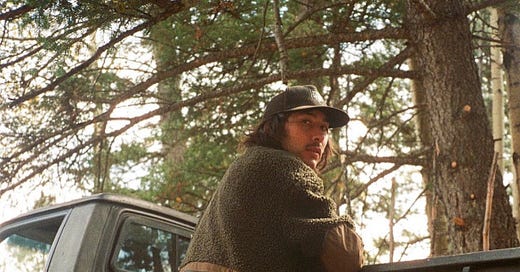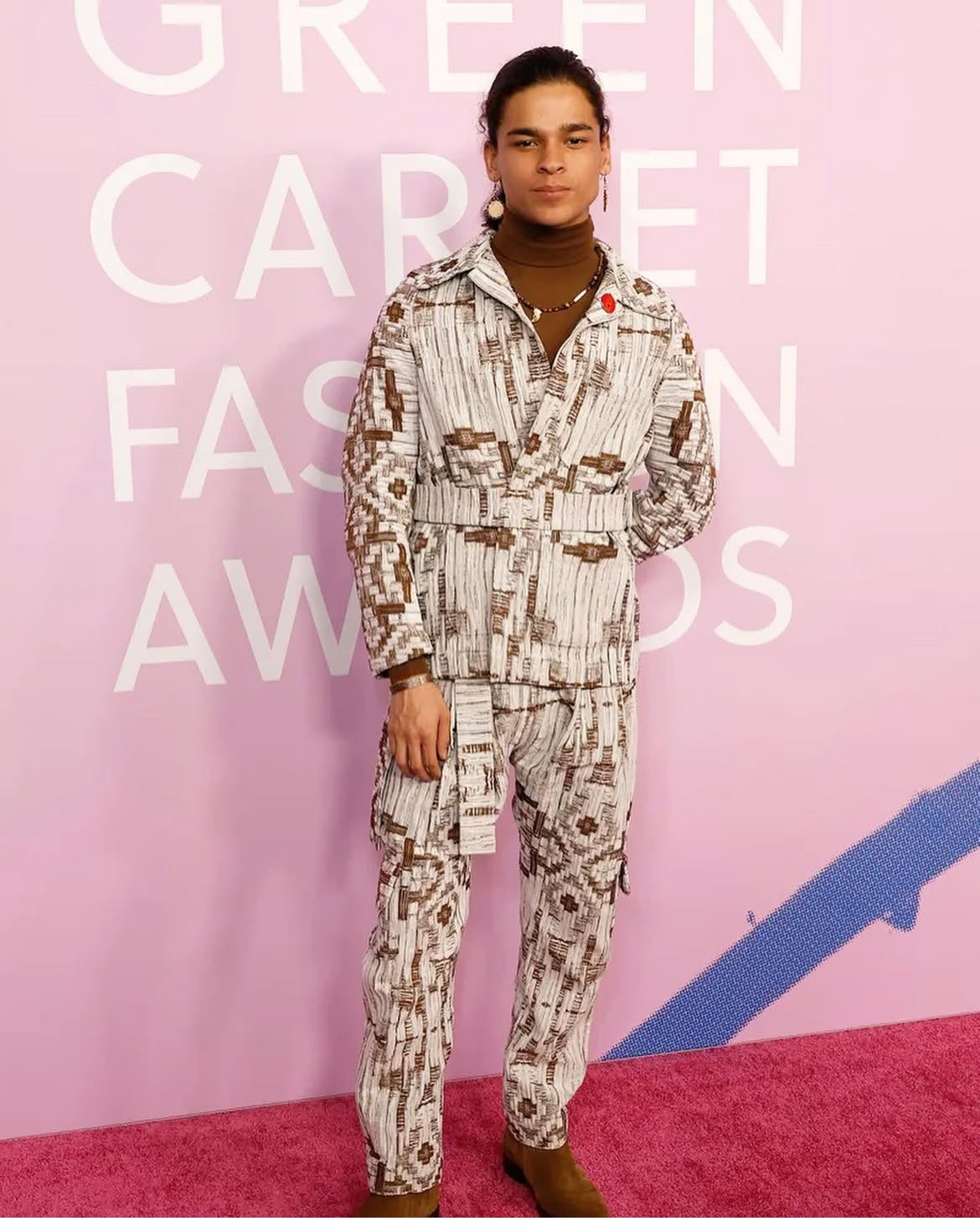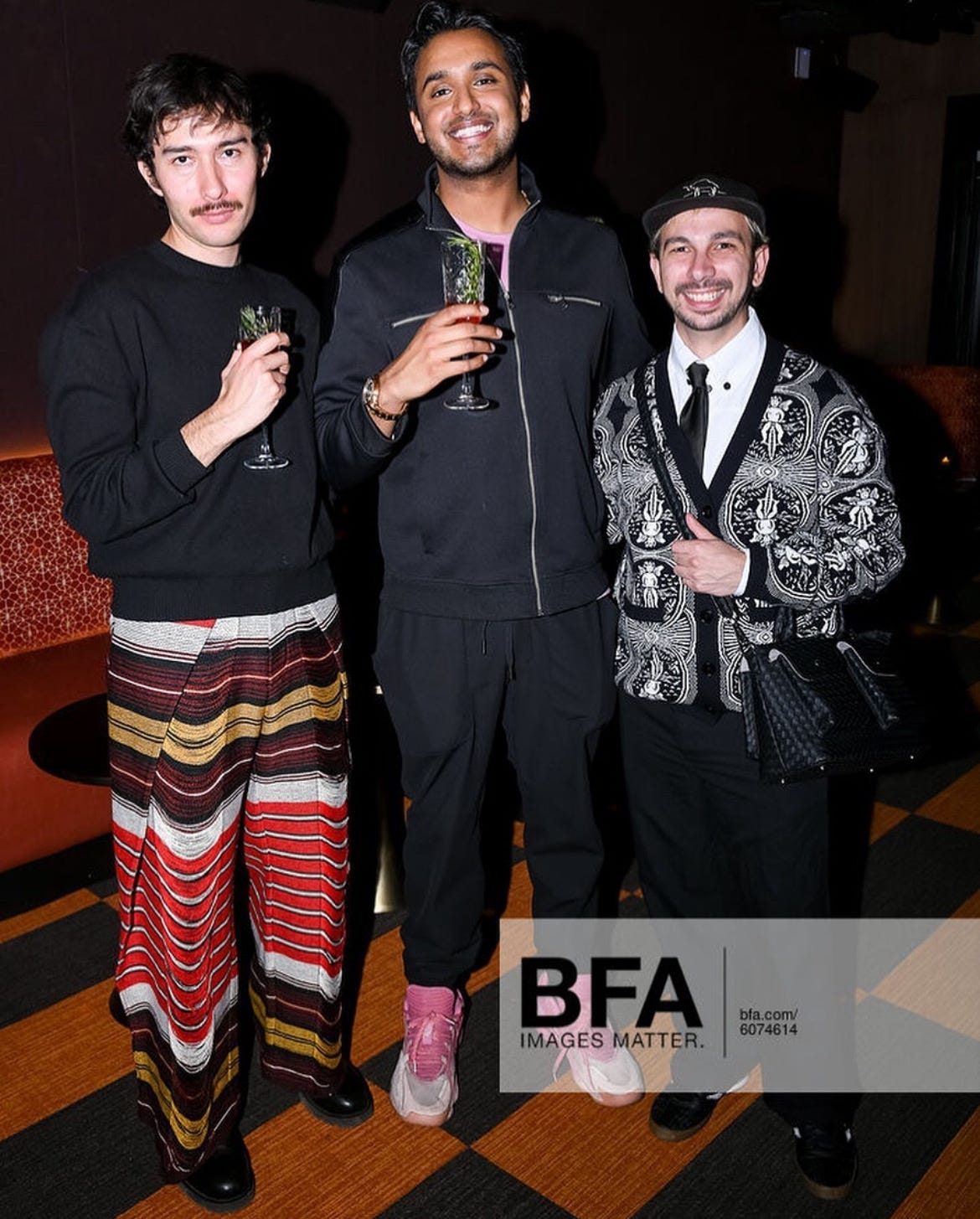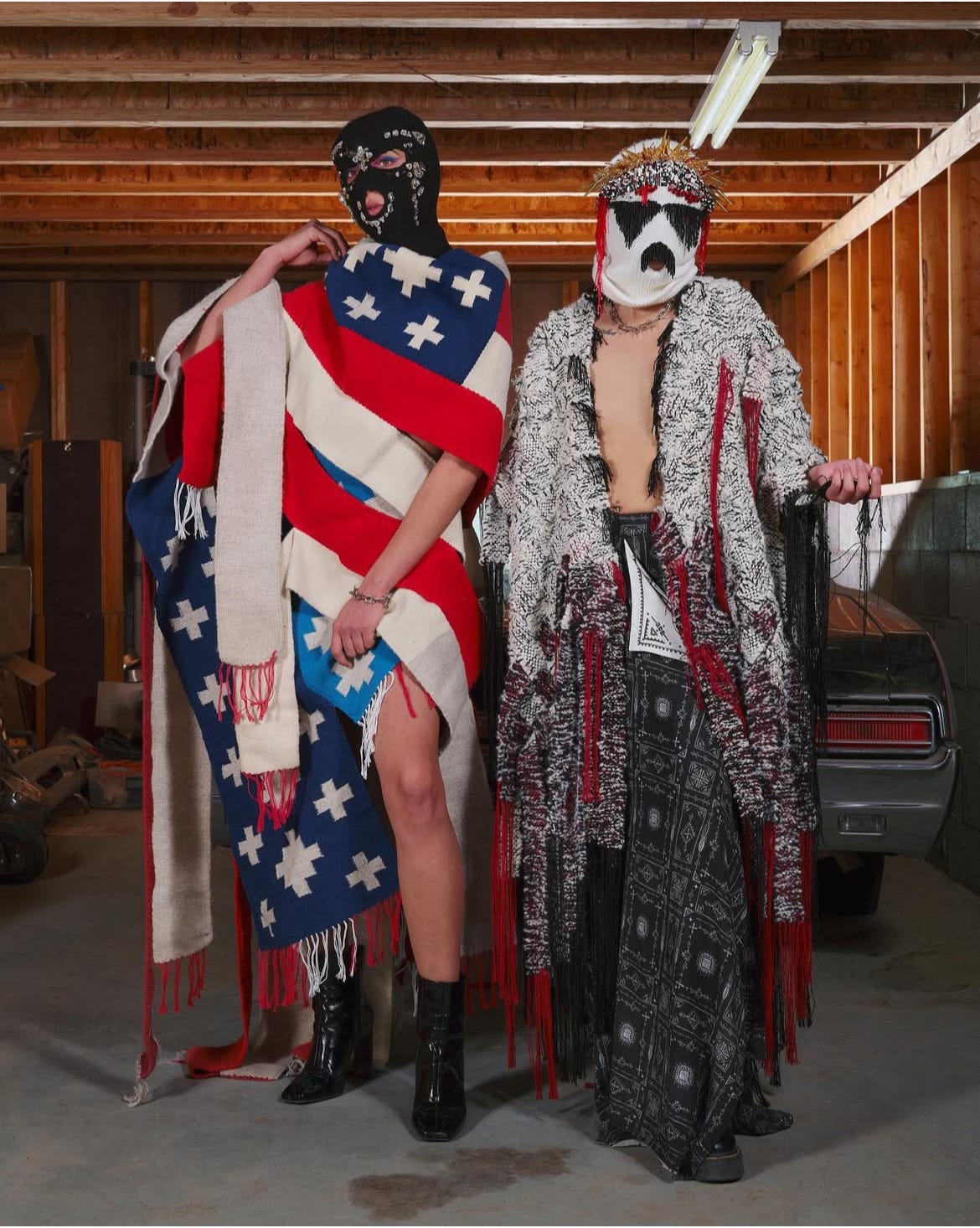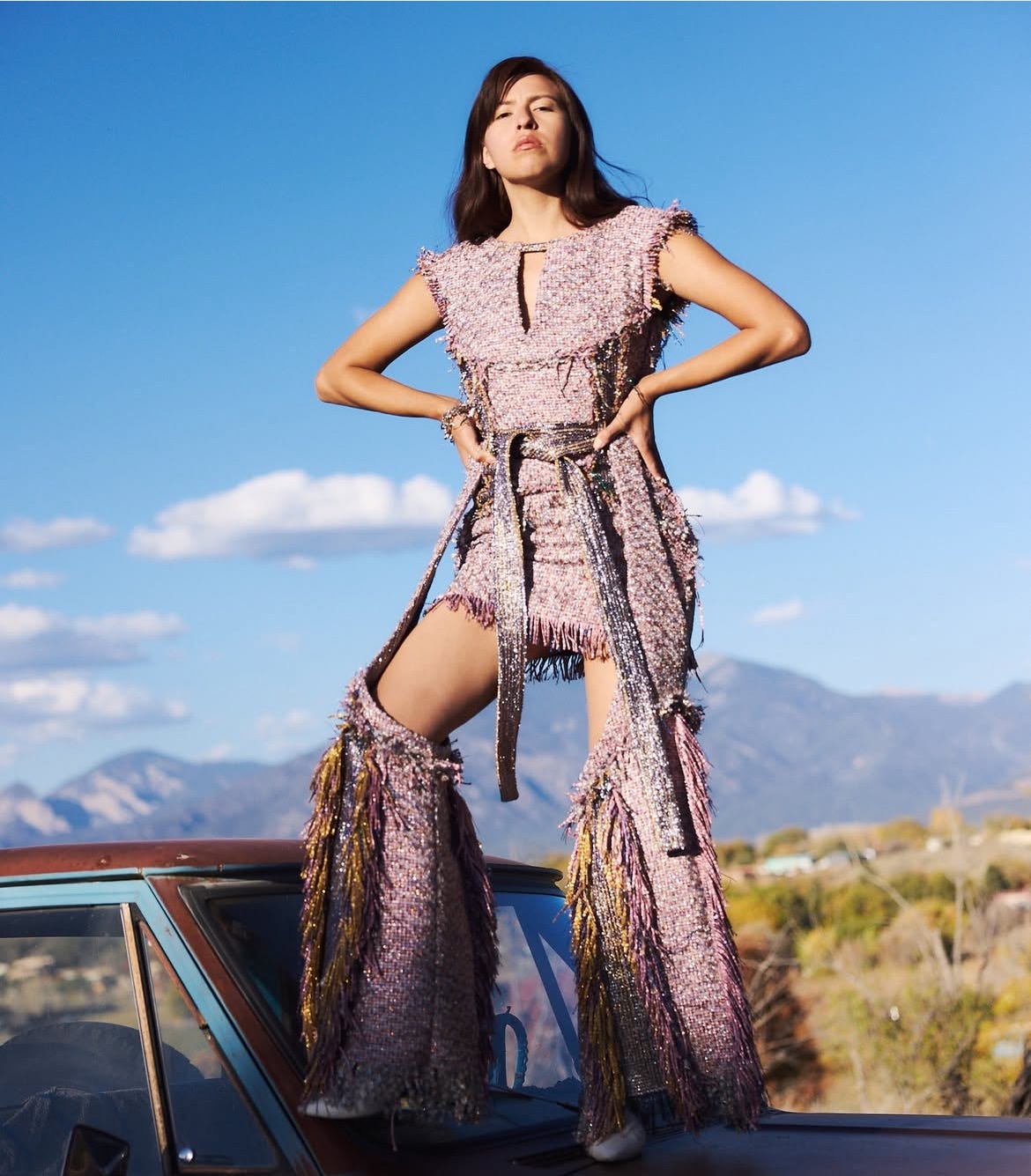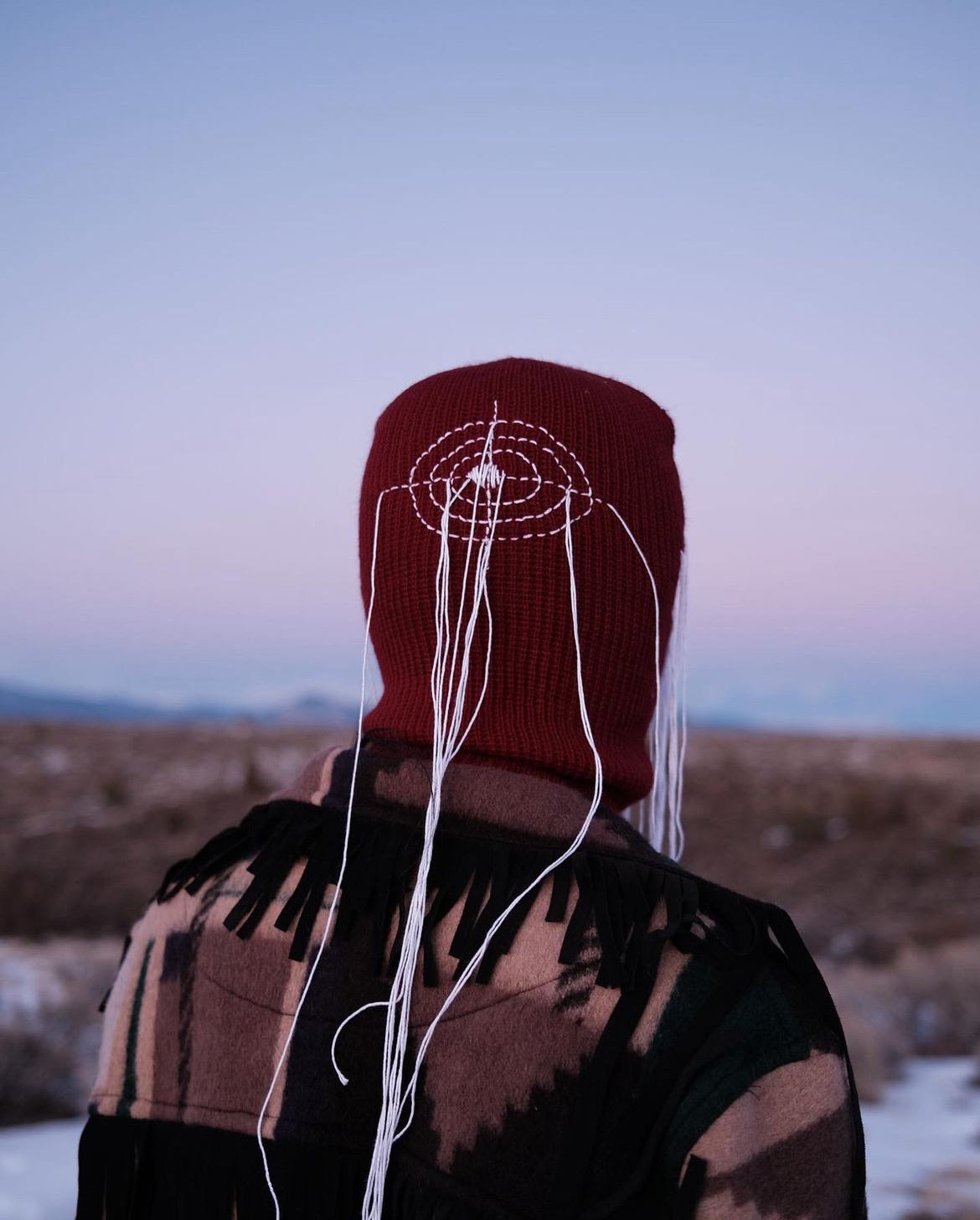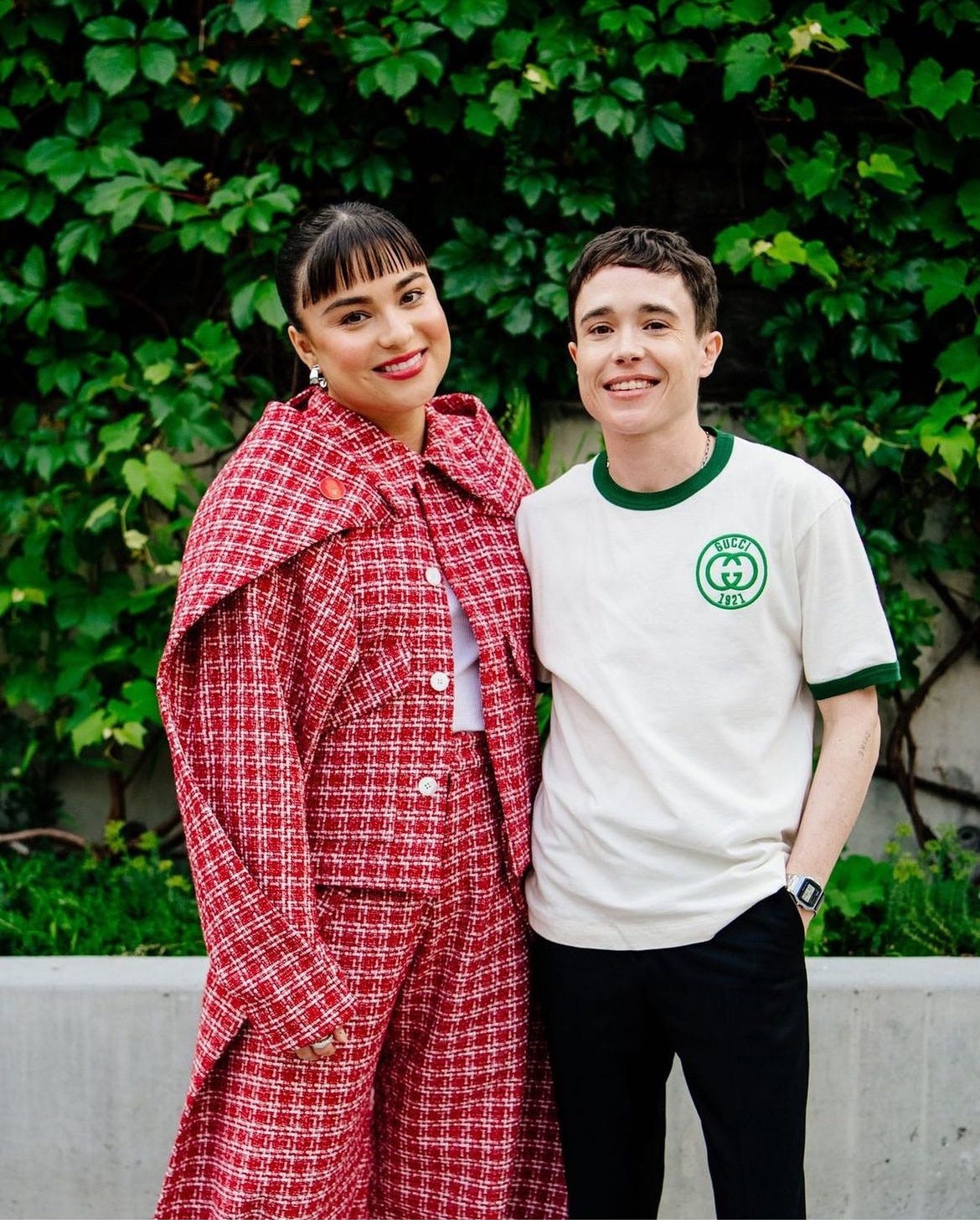Josh Tafoya on Deconstructing Indigenous Fashion
Josh’s afflatus shines through, as does the paucity of inspiration across the stable of LVMH and Kering’s brands representing all things occidental and chic.
Josh Tafoya and I met in person at a bustling tea house in SoHo. Tafoya had arrived in NYC that day and, moments before our meeting, jetted over to help set up an Indigenous art show with Forest For Trees Collective slated that weekend on Governor’s Island––a location as hidden in plain sight as his familial Genízaro tribe: the linchpin of his art. Tafoya spends one-third of his time in NYC and two-thirds in his home state of New Mexico, immersed in his Genízaro community. Back in New Mexico last month, at SWAIA’s spring fashion week Tafoya launched his entirely self-produced spring runway: a percussive défilé de mode that dazzled with textured and sculptural pieces made from dead stock fabrics, raffia, weavings, and sparkling poly-blends. Amidst the Native fashionscape, Tafoya is a standalone and a CFDA nominee whose oeuvre centers on sustainability and culture. However, Josh’s essence is rooted more deeply than his millennial-Gen Z-cusp contemporaries, whose value for sustainability is at least partly a reaction to an inherited climate crisis. Josh not only embodies the Native colloquialism “living in good relations with the earth” but forges an aesthetic marked by spiritual and earthly symbolism. The semiotics of his work span from brujería to the historic enslavement of the Indigenous peoples in what is now known as New Mexico. Witnessing a Josh Tafoya runway presents viewers with a phantasm of Genízaro history imbued into kitschy and contemporary silhouettes: an arresting mix that is the true definition of IYKYK.
Tafoya, born near Taos, New Mexico, identifies as Hispano and Genízaro and spent much of our conversation perorating about the context of his work. “Hispano,” he said, is a contemporary term encompassing Indigenous peoples in New Mexico and around the U.S.-Mexico border, including the Genízaro tribe. The name genízaro is Spanish for janissary, a member of the Turkish GI forming the Sultan's guard between the 14th and 19th centuries. Ethnically, the Genízaro are an amalgam of Comanche, Kiowa, Ute, Navajo, and Apache peoples and cultures concentrated and enslaved in haciendas during the Spanish Catholic occupation of the region beginning in the 16th century. While Americans typically associate slavery with the African diaspora, Tafoya’s work exposes the erased Indigenous slavery that shaped the Genízaro, who are today still not federally recognized. This is because of their co-constitution by two colonial projects: Spanish haciendas and America’s paternalistic system of federally recognized tribes. This liminal position between structures meant the Genízaro were neither federally recognized nor affected by the Emancipation Proclamation of 1865. The Genízaro were eventually offered freedom in the mid-19th century through a pseudo-feudal system of peonage trading ranching labor or army service for limited freedom and land ownership.
Before Tafoya found his material and metaphysical muses, he was a young high school student and self-taught sewer. He later attended Parsons and worked for fashion designer Charles Youssef, eventually transitioning to freelance work and the conception of his brand. In his brand’s nascency, he envisioned launching in the glamorous chaos of the Big Apple’s iconic fashion scene and maintaining residency in New York and New Mexico.
I asked Josh about the inflection point for his developing label concept. At the end of 2017, Josh said, “A childhood friend returned to the Southwest from San Francisco, opening a farm-to-table restaurant, and asked me, reluctant, to use leftover churro sheep wool disposed of after the eatery’s meat was butchered.” Despite initial disinterest, Tafoya became curious about historical uses for churro sheep wool, learning to spin and weave the fiber now commercially unpopular because of its rough texture. Seeing his fascination, Tafoya’s father, “very tradish” and taciturn about the past, divulged the family were themselves once churro ranchers; his father built looms, and his mother wove, Tafoya’s father admitted, gesturing to wall pieces throughout their home and proclaiming joyfully that his son had assumed a generations-old family tradition. Tafoya’s family raised Josh “old school” in some ways while eschewing what they viewed as antediluvian conventions for a more modern lifestyle; his mother stayed at home, and his father became a construction worker, Josh noted with a mix of malaise and excitement as if sharing a family secret.
Josh showed me examples of his work. First, his Fall/Winter 2014 collection titled “Cholo” which uses classic American silhouettes to combine gang culture and religious iconography, including Lady Gaga as Virgin of Guadalupe, the likes of which can be seen in kitsch shops on satirical Mexican prayer candles.
Josh’s “Ranchero” SS23 collection drew from his father and grandfather's labor in bean fields. Another tableau vivant illustrating the transition from nomadism to agrarianism during the Spanish occupation of New Mexico.
In his most recent SS24 runway, a collection titled “Riot” is vivacious, kitschy, and Americana-themed and includes a green suit gesturing towards the ubiquitous New Mexico cacti, a “Bad Hombre” emblazoned poncho, and an American flag shawl reimagined with Navajo stars, both of which Tafoya says took months to hand weave.
Catalyzed by New Mexican peoples’ sundry struggles towards collective liberation, Tafoya relayed as if through anamnesis how he uses his pieces to recall and commemorate historical uprisings. Rattling them off like common knowledge, he told me of the 1680 Pueblo revolt in New Mexico against the Pope and Spanish rule; the 1837 Chemayo Revolt of Pueblo-Hispanos that put Indigenous leaders José María Gonzalez and Pablo Montoya as temporary governors of the Santa Fe de Nuevo Mexico; and, lastly, the 1847 Taos Revolt against U.S. occupation of the territory, resulting in then governor Charles Bent’s famous scalping and beheading in his home by Hispano Indians. Perhaps his most transgressive and diffuse in inspiration and aesthetics, the collection lifts up cultural fragments and the seditious spirit of the Pueblo-Hispano Indians who formed the community now called the Genízaro.
Tafoya’s multi-medium work is both art and haute couture. Juxtaposed with other luxury fashion creatives Josh’s afflatus shines through, as does the paucity of inspiration across the stable of LVMH and Kering’s brands representing all things occidental and chic. Unlike Tafoya’s singular one-man show, these pioneers, not of the Southwest, but of fashion are caught in a double bind; in search for inspiration but caught without their old haunts like cultural appropriation––à la Victoria’s Secret’s Native headdressed models––and cultural imperialism, superimposing white beauty standards upon the plastic feather bedecked figures. Left further in the lurch by academic and internet discourse, fashion is forced to break its ouroboric cycle of sneaky ethnnocultural consumption affecting self-aggrandizing inspiration. Needing to fill the gap of true creativity, here enters Josh Tafoya, an emerging Indigenous entrepreneur creating all his work from scratch himself. A value and vision for employing community members and traditional and sustainable techniques and materials make Tafoya’s work the embodiment of slow fashion, qualities that may limit his capacity to rise. However, instant fame is not Tafoya’s main or even secondary goal. By contrast, he operates with profound ownership of his work and a groundedness to place and space the moderates scaling his label.
Southwestern and New York luxury fashion stalwarts traditionally upper middle and upper class now opt for less ostentatious mid-tier brands characterized as “quiet luxury,” while their more à la mode oriented replacements, millennials and Gen Zs, assume the position of affluence acolyte. Tafoya himself is a millennial producing luxury adornment and aligns most with this audience’s ever-increasing diversity and green values. Whether upholding environmental accountability is nature or nurture, Tafoya’s values are decidedly endemic and exist in a luxury market whose young customers have a more nurtured taste for eco-fashion and still skew towards high consumption than Tafoya is prepared to produce. Moreover, Gen Z consumers came up in a pop culture era that doesn’t pathologize but embraces its low attention span and feeds off increasingly vulnerable expressions of authenticity. This market has designed an equation Tafoya’s veraciously distinct style serves as a near perfect solution to except that he truly embodies slow fashion and this fissure between his near perfect supply and demand is only magnified by the pseudo-accessibility proffered by social media. While Tafoya is the real deal, the question remains whether accountability culture intersecting with the environment will materialize or whether it’s simply performative.
Queer creatives like Tafoya have real appeal by, as trite as it sounds, being unafraid to be themselves. Similarly bold gay country star and fashion symbol Orville Peck graced the cover of Paper Magazine seated on a balloon bull, dawning his uniform of a cowboy hat and boots, signature mask, and yellow rubber gloves (à la Dexter’s mom from Cartoon Network) and nothing else. As Indigenous creatives are seen to be inherently in tune with the environment and sustainability, Peck bears the mantle and performs toward expectations of sexual authenticity in this cover. But parroting the aphorism here that “sex sells” would deny the specificity and keenly camp proclivities and requirements of successful queer creatives that Peck eccentrically satisfies. While Tafoya perhaps embodies the always already sustainable anticipations of Indigenous fashion audience, he doesn’t noticeably engage in salacious preconceptions of queer artists. Josh marries his sui generis Indigenous and gay identities, blending an ostentatious and larger-than-life queer aesthetic with a temporal relationship to homeland, life, and spirituality. And while other couturiers who become public figures risk becoming part of social media’s collection of totemic figures (no pun intended) mining their souls for content to continue building their standom, Tafoya remains grounded as yet by his Genízaro and Hispano roots.
Indigenous designers like Josh Tafoya are innately liminal, living and working in the modern world while tied to a homeland that functions in and of itself between past, present, and future. Tafoya intends to continue expanding his horizons in New York City and learning and being inspired by Hispano and Genízaro influences that are themselves resistant to globalization and circumscribed by their Mexican and New Mexican borders.

